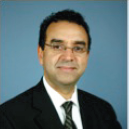Author Interviews, NYU, Tobacco, Tobacco Research / 11.12.2015
Hookah Smoking and Bars Flourishing
MedicalResearch.com Interview with:
Michael L. Weitzman MD
Professor, Departments of Pediatrics and Environmental Medicine
NYU Langone Medical Center.
Medical Research: What is the background for this study? What are the main findings?
Dr. Weitzman: While the prevalence of cigarette smoking in the United States has recently seen a steady decline, more and more individuals report hookah (water pipe) usage. Researchers have shown that web queries for ‘hookah’ and ‘hookah bars’ have increased dramatically, but it is unclear whether this interest has led to an increase in the number of hookah bars in a given area. We first tested the website Yelp.com to see whether it could reliably provide us with information – such as the date of establishment of a hookah bar – by comparing the date of the first review written on Yelp.com with the actual opening date. We found that, for 2014 onwards, the first review posting on Yelp.com, on average, occurred within the first month of a hookah bar’s opening date. Additionally, we found a dramatic increase in the number of hookah bars in New York City over the past 5 years. These hookah bars tend to be not randomly distributed, but instead clustered near universities and specific ethnic neighborhoods.
(more…)

















